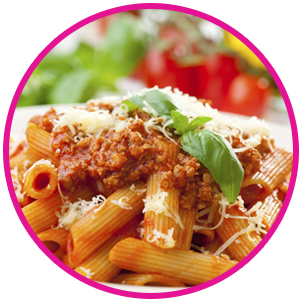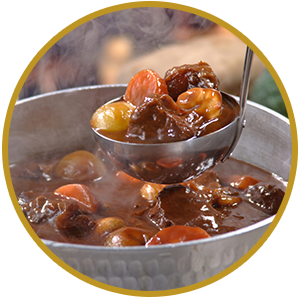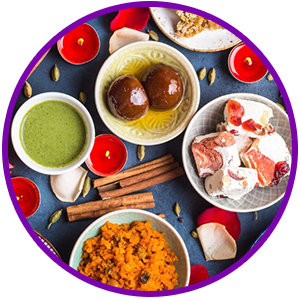
Perfect Pasta
Pasta is a staple of Italian cuisine. If you’ve visited Italy you will not be surprised at the array of pasta on offer. It comes in all manner of shapes and sizes, however is all made of the same ingredients, flour, water and eggs. Pasta dishes are often simple, but they are always full of flavour.
Did you know that there are approximately 350 different types of pasta? The most popular ones are fusilli, spaghetti, fettuccine, linguine, penne, tagliatelle, cannelloni and farfalle. But, we don’t eat them without a sauce. Although, the sauce should not overwhelm the pasta; it acts as a tasty counterpoint. Never drown pasta in sauce; there should be sufficient sauce to lightly coat each strand of pasta and no more.
It’s not spag bol!
Spaghetti Bolognese is a famous Italian pasta dish, but did you know that the original recipe uses tagliatelle – not spaghetti! It is tagliatelle that should accompany the rich meat and tomato sauce, making it “tag bol” rather than “spag bol”, and if eating out in Italy the dish is known as Ragù alla Bolognese.
How do you choose the right pasta?
Choosing the right pasta depends on the topping. “The shape should be dictated by the sauce,” says chef Sara Jenkins. Keep this easy pairing advice in mind.
- Tubes
Tubular shapes like penne are perfect with hearty, thick sauces. Rigate, the ridged ones, hold even more sauce. - Ribbons
Wide, flat pastas like pappardelle are ideal for sopping up creamy sauces. Generally, the wider the noodle, the heavier the sauce it can take. - Rods
Long pastas like spaghetti are best with olive oil and tomato-based sauces, which coat each strand evenly. Choose thinner rods for delicate preparations. - Shapes
“Chunky vegetable sauces absolutely go better with short pastas that have lots of crevices to trap the sauce,” says Jenkins.
How to cook pasta
You may have heard lots of tips about how to cook pasta, and most importantly ways to judge when it is perfectly cooked to the Italian ‘al dente’ standard. This information may have included throwing pasta at a tiled wall.
The packet usually tells you how long you should cook it for. Less than this time and it will be too hard, and going over the specified time means it becomes too soft and glutinous. In general, non-Italians like their pasta just a bit softer than Italians do, so you may want to go a little bit over the timing on the packet, but not too much. Experimentation will give you the right timing for your taste.
Pasta at Leo Foods
As the Italians are all about the quality and flavour, most of our pastas and sauces can be found in our Organic range, making them a healthier option. Our range includes, red lentil penne, chickpea fusilli, brown rice fusilli, maize and rice fusilli, maize and rice spaghetti, and brown rice spaghetti. You can also pick up staple sauces, and pesto for a fresh and vibrant dish.
Check out our Italian and Organic pages on our website for details of the products we stock.





